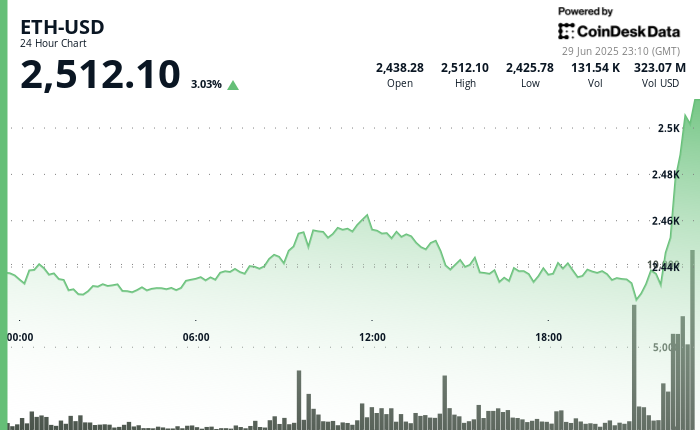
A
major
theme
of
2023
was
Asia’s
continued
rise
as
a
critically
important
region
in
the
crypto
world.
This
is
largely
thanks
to
well-known
digital
asset
hubs
like
Singapore,
as
well
as
the
re-emergence
of
Hong
Kong
and
Japan.
While
these
jurisdictions
indeed
welcome
digital
assets,
the
hype
around
them
can
be
somewhat
misleading.
Places
that
are
commonly
referred
to
as
“crypto-friendly”
or
“pro-crypto,”
actually
have
some
of
the
toughest
rules
in
the
world.
Crypto-friendly
does
not
mean
crypto-easy.
Singapore
got
its
pro-crypto
reputation
thanks
to
its
early
moves
to
regulate
the
industry
and
a
consultative
approach
from
its
regulators.
But
while
Singapore
may
be
all
in
on
asset
tokenization,
it’s
actually
not
“crypto-friendly”
at
all.
Singapore’s
financial
regulator
basically
said
as
much.
Last
year,
Ravi
Menon,
managing
director
of
the
Monetary
Authority
of
Singapore,
gave
a
talk
called,
“Yes
to
Digital
Asset
Innovation,
No
to
Cryptocurrency
Speculation.”
This
year
he
went
even
further,
saying
that
cryptocurrencies
“have
failed
the
test
of
digital
money.”
Menon
argued
that
cryptocurrencies
have
not
performed
well
as
a
medium
of
exchange
or
a
store
of
value.
He
also
pointed
to
sharp
speculative
swings
and
significant
losses
by
crypto
investors.
It’s
not
just
talk,
either.
Last
year
MAS
issued
guidelines
to
discourage
crypto
trading
by
the
general
public,
which
included
prohibiting
crypto
service
providers
from
advertising
in
public
areas.
By
contrast,
Singapore
regulators
are
extremely
enthusiastic
about
the
tokenization
of
funds
such
as
foreign
exchange
and
bonds.
There’s
also
been
a
lot
of
excitement
about
Hong
Kong’s
re-emergence
as
a
crypto
hub.
In
June,
Hong
Kong’s
Securities
and
Futures
Commission
(SFC)
started
accepting
license
applications
for
crypto
exchanges.
Hong
Kong
appears
to
be
more
outwardly
friendly
to
crypto
trading
than
Singapore.
Hong
Kong
regulators,
for
example,
pushed
banks
to
take
on
more
cryptocurrency
exchanges
as
clients.
But
again,
this
friendliness
comes
with
a
lot
of
conditions.
Hong
Kong
still
has
only
two
licensed
exchanges,
with
only
spot
trading
and
a
limited
list
of
tokens.
Ninety-eight
percent
of
an
exchange’s
assets
must
be
held
in
cold
wallets.
Exchanges
also
must
set
up
a
legal
entity
for
custody
inside
of
Hong
Kong.
Operating
an
exchange
in
Hong
Kong
is
neither
simple
nor
cheap,
as
getting
approved
entails
a
team
of
lawyers,
consultants
and
insurance
providers.
Getting
a
new
license
could
cost
anywhere
between
$12
and
$20
million,
CoinDesk
reported.
Then
there’s
Japan,
whose
ruling
Liberal
Democratic
Party
has
been
clear
about
its
intention
to
make
Japan
a
Web3
capital.
“While
many
other
countries
are
standing
still
and
shrugging
their
shoulders
in
the
face
of
the
cold
wind,
Japan
is
positioned
to
play
a
unique
role
in
the
crypto
industry,”
read
a
2022
proposal
from
Japan’s
LDP
project
team.
Japan
is
no
stranger
to
cold
winds.
Following
the
Coincheck
hack
of
early
2018,
Japanese
regulators
were
so
tough
on
crypto
that
some
feared
the
local
industry
was
in
crisis.
But
when
FTX
collapsed
in
November
2022,
Japan’s
regulatory
approach
led
to
a
major
win.
Japan
requires
crypto
exchanges
to
segregate
exchange
and
customer
assets,
and
this
helped
FTX
Japan
users
actually
get
their
money
back.
Japan
also
is
among
the
first
major
economies
to
see
stablecoin
regulations
go
into
effect,
but
it
sets
a
very
high
bar.
Only
banks,
trust
companies
and
fund
transfer
services
are
allowed
to
issue
stablecoins
in
Japan.
The
trust
structure
is
likely
to
be
a
common
path,
but
this
requires
that
100%
of
the
assets
backing
the
stablecoin
to
be
kept
in
a
trust
in
Japan,
and
are
only
permitted
to
be
invested
in
domestic
bank
accounts.
Given
Japan’s
low
interest
rates,
this
could
make
it
very
challenging
for
yen-based
stablecoins
to
be
profitable.
But
in
the
end,
Japan’s
biggest
obstacle
to
being
a
destination
for
crypto
entrepreneurs
may
be
high
taxes.
Singapore,
Hong
Kong
and
Japan
have
something
important
in
common.
They
might
not
be
easy
on
crypto,
but
they
are
relatively
clear.
Exchanges
have
an
idea
of
what
they
can
and
can
not
do.
Regulators
in
all
three
jurisdictions
have
put
in
the
time
to
craft
comprehensive
regulatory
frameworks
and
have
also
demonstrated
willingness
to
engage
with
the
industry.
In
other
words,
you
may
not
like
the
rules,
but
at
least
you
know
how
to
find
them.
This
approach
poses
a
stark
contrast
to
the
United
States.
Crypto
advocates
often
criticize
the
U.S.
government,
and
more
specifically
SEC
Chair
Gary
Gensler,
for
being
unfriendly
toward
crypto.
The
larger
problem
is
not
that
regulations
are
too
harsh,
it’s
that
people
are
still
arguing
about
what
is
a
security
and
what
is
a
commodity.
The
result
is
that
in
the
absence
of
a
national
crypto
framework,
people
look
for
clarity
in
court
decisions.
The
SEC
has
levied
complaint
after
complaint.
Many
in
the
industry
looked
to
the
Ripple
court
decision
in
the
hope
that
it
would
set
a
clarifying
precedent.
But
not
all
companies
have
the
time
and
capital
to
spend
years
battling
the
SEC
in
court.
The
crypto
environment
in
the
United
States
is
decidedly
unfriendly,
but
it’s
not
because
the
rules
are
too
strict.
It’s
because
no
one
agrees
on
what
they
are.
Global
crypto
regulations
are
clearly
trending
toward
strictness,
as
we
will
see
when
Europe’s
MICA
takes
effect
next
year.
The
extensive
regulations
for
the
27
member
states
of
the
European
Union,
covering
about
450
million
people,
are
going
to
be
anything
but
lax.
And
yes,
it
is
possible
to
be
too
strict.
That’s
why
it’s
so
important
for
regulators
to
be
flexible
and
open
to
talking
to
the
industry,
so
that
they
can
make
appropriate
changes
if
overbearing
rules
are
making
it
impossible
for
businesses
to
thrive.
It
may
be
time
to
retire
the
term
“crypto-friendly,”
which
gives
the
impression
of
ease.
A
more
accurate
term
is
crypto-clear.
If
and
when
the
crypto
market
fully
revives,
that
clarity
will
give
places
like
Singapore,
Hong
Kong
and
Japan
a
distinct
advantage.
